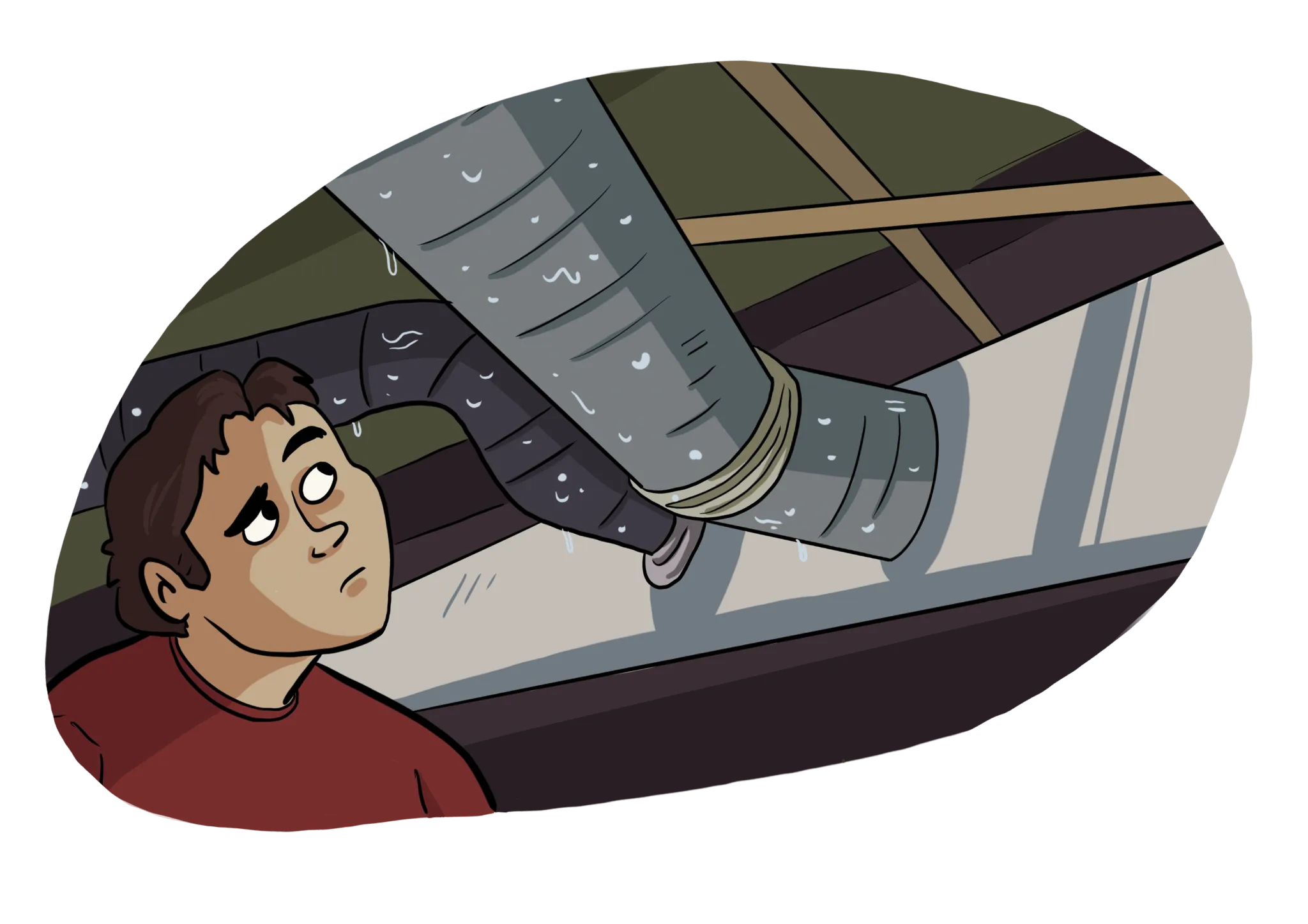Have you noticed water droplets on the outside of your ductwork? This is called duct sweat. It’s just like when you have a cold drink when it’s hot outside—the cup sweats.
Have a heating, cooling, or plumbing problem, but no time to wait for a repairman? Need a second opinion on an existing quote?
We’ll give you free advice about your question or problem. In many cases, you’ll get an estimate or the help you need during the video call.

What causes duct sweat?
Humidity
Duct sweat is usually a result of too much humidity. This is why you will notice duct sweat more during summertime than any other time of the year.
Your ductwork needs cleaned
When there is a blockage in your ductwork, the outside of the system becomes cooler as a result of too much cool air gathering in one place. This leads to condensation which causes your duct to sweat.
Poor duct insulation
A lack of proper duct insulation is another cause of duct sweat. Without a vapor barrier in place, the cold surface of your duct system and humid air outside of the system cause condensation.
A need for duct sealing
Making sure your ducts are sealed is essential. Any holes or gaps in the ductwork can allow extra humidity into the home.
A bigger issue below the dew point
While duct sweat is a common issue many homeowners face, it is also an issue of concern. Drips from the duct sweat can cause water damage to ceilings and drywall. Mold can grow in these conditions—which can impact the health of your home. In severe cases, large ceiling leaks can even lead to structural problems.
Dew Point: Dew point is the temperature at which the relative humidity reaches full capacity. When the dew point is reached, the air isn’t able to hold any additional water as a vapor. This is why your ductwork develops water droplets on it. As the temperature of the duct gets cooler than the hot air outside the system, the water turns into a liquid.
How to stop duct sweat
There are multiple steps you can take to minimize the harmful effects duct sweat can cause.
Seal your ducts
If your duct is leaking, it probably means there is a gap in your hole that needs to be sealed. It will also help outside air from getting in and cold air from getting out of your ducts—reducing the amount of condensation that forms.
Get proper duct insulation
Proper duct insulation will prevent your home’s ductwork from becoming too cool and in the process stop duct sweat.
Install a Vapor Barrier
Many homes nowadays already have vapor barriers between the walls, above the ceiling, or in the crawlspace, to keep extra moisture out. If your home doesn’t have a vapor barrier and your ducts are sweating, consider having one installed.
Commercial Service offers 24/7 emergency services and is always happy to send over a certified technician to assess any potential problems. For non-emergency repairs, schedule an appointment with our easy Online Scheduling or by calling 812-339-9114.
If you notice sweat on your ductwork, call Commercial Service at 812-339-9114. Our trained technicians will help you determine what the best solution is for the well-being of your home and family.



